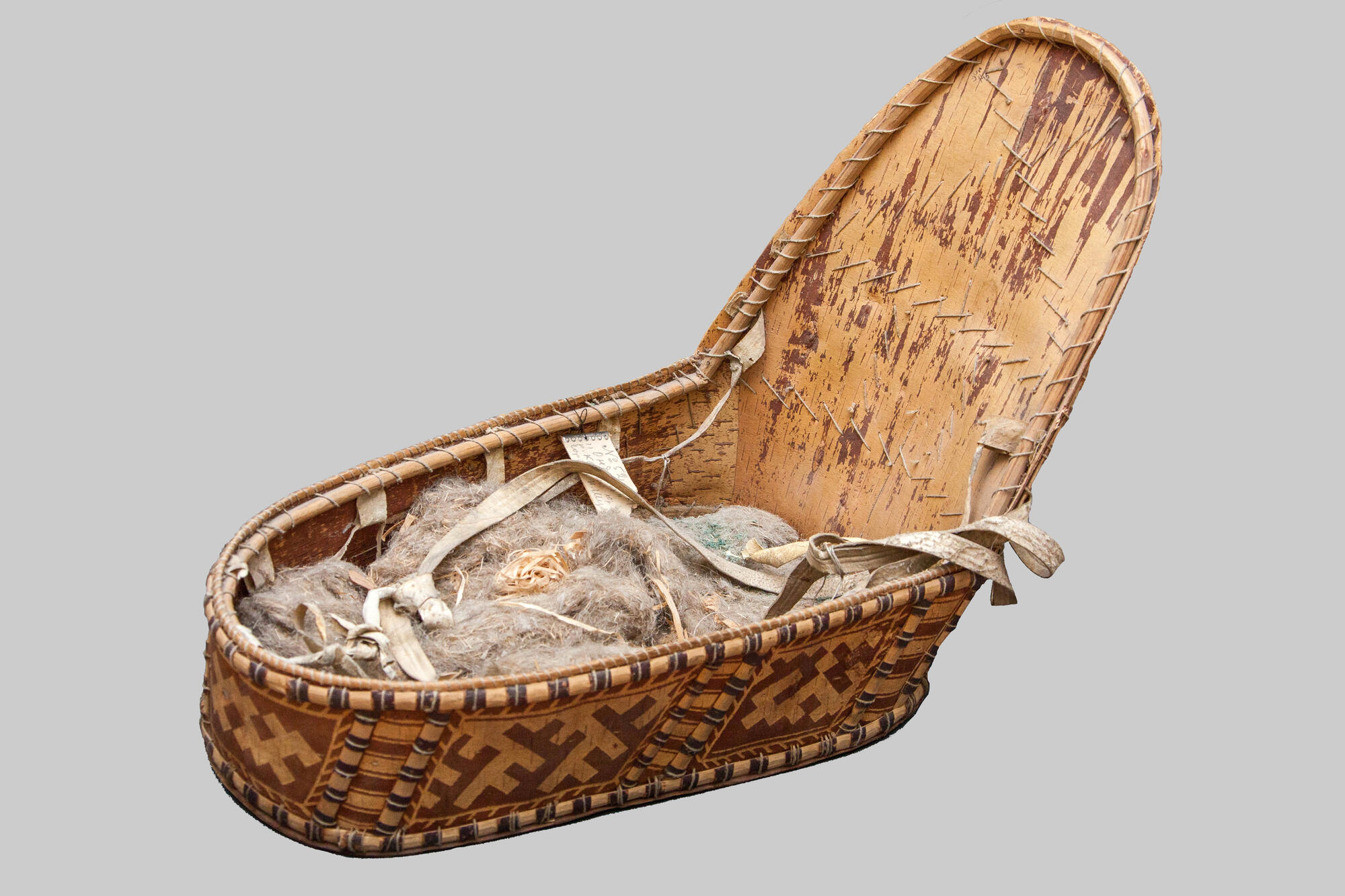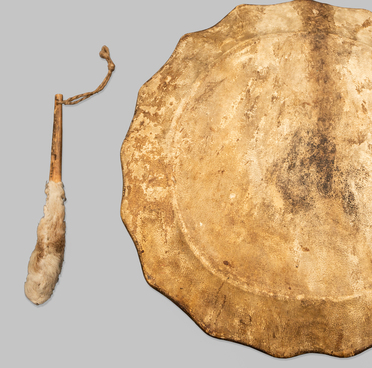The Khanty baby day cradle from the ethnographic collection of the Tobolsk Provincial Museum is made of birch bark and decorated with simple geometric ornaments. As a rule, permanent cradles, in which the child could live up to three years, were made by men after the birth of the baby. Before that, babies lived in the temporary cradles made by their mothers.
Such cradles were made of three parts, i.e. birch bark oval bottom, sides, and back. The master laid a strip of rawhide on the edges of the flat bottom. The upper and lower edges of the sides, as well as the back were reinforced with bird cherry rods and additional slats. There were loops attached to the cradle, through which leather straps could be threaded. The patterns that adorn the cradle are made in the scraping technique that is one of the most common among the Khants.
There were two types of day cradles, i.e. wooden with a back and birch bark with a back decorated with patterns. A soft skin was attached on the back, under the child’s head. Inside the cradle, the mother put crushed wood rot on the birch bark mat. They absorbed moisture well and left a pleasant smell. When wet, they were removed, but they could only be stored in certain places. You cannot, for example, put them under a growing tree. Otherwise, the child will swing from the wind. The cradles were treated in a special way. The happy one was cherished and passed down from generation to generation, and the one in which the children died was taken away to the forest. The image of the capercaillie, the guardian of sleep, was applied to the birch bark cradle along with other patterns.
The child practically lived in the cradle until the age of three. They not only slept in it, but often sat during the day. To feed the child, the mother put the cradle on her lap, and when it was necessary to leave, she hung it by belt loops to the pole of the chum or to a hook in the ceiling of the hut. You could sit and work side by side, thus rocking the cradle with your foot through the loop. When walking, it was carried behind the back connecting the belt loops on the chest, and during a stop in the forest, it was suspended from a sloping tree higher from the ground where there are fewer midges and a snake cannot crawl. When riding deer or dogs, the mother put the cradle on her sled. If the child was left at home alone, then the symbol of fire, i.e. a knife or matches, was placed in the cradle to protect it from evil spirits.
Such cradles were made of three parts, i.e. birch bark oval bottom, sides, and back. The master laid a strip of rawhide on the edges of the flat bottom. The upper and lower edges of the sides, as well as the back were reinforced with bird cherry rods and additional slats. There were loops attached to the cradle, through which leather straps could be threaded. The patterns that adorn the cradle are made in the scraping technique that is one of the most common among the Khants.
There were two types of day cradles, i.e. wooden with a back and birch bark with a back decorated with patterns. A soft skin was attached on the back, under the child’s head. Inside the cradle, the mother put crushed wood rot on the birch bark mat. They absorbed moisture well and left a pleasant smell. When wet, they were removed, but they could only be stored in certain places. You cannot, for example, put them under a growing tree. Otherwise, the child will swing from the wind. The cradles were treated in a special way. The happy one was cherished and passed down from generation to generation, and the one in which the children died was taken away to the forest. The image of the capercaillie, the guardian of sleep, was applied to the birch bark cradle along with other patterns.
The child practically lived in the cradle until the age of three. They not only slept in it, but often sat during the day. To feed the child, the mother put the cradle on her lap, and when it was necessary to leave, she hung it by belt loops to the pole of the chum or to a hook in the ceiling of the hut. You could sit and work side by side, thus rocking the cradle with your foot through the loop. When walking, it was carried behind the back connecting the belt loops on the chest, and during a stop in the forest, it was suspended from a sloping tree higher from the ground where there are fewer midges and a snake cannot crawl. When riding deer or dogs, the mother put the cradle on her sled. If the child was left at home alone, then the symbol of fire, i.e. a knife or matches, was placed in the cradle to protect it from evil spirits.



